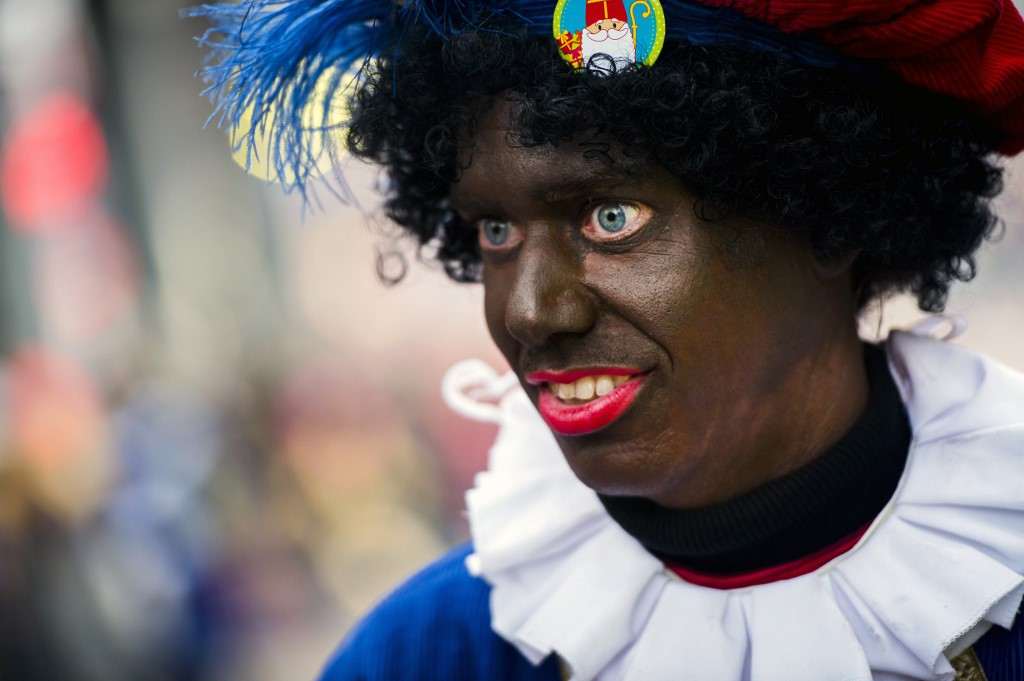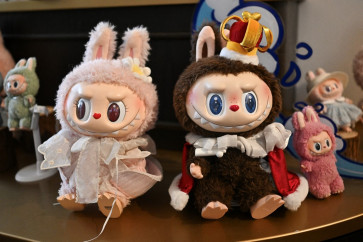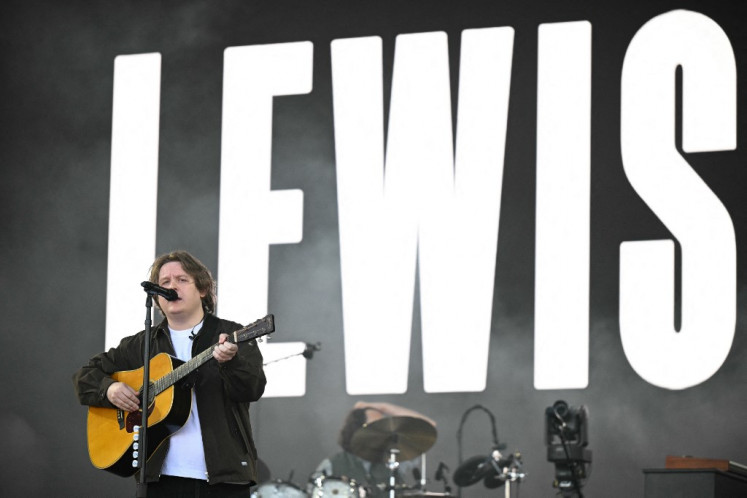Popular Reads
Top Results
Can't find what you're looking for?
View all search resultsPopular Reads
Top Results
Can't find what you're looking for?
View all search results'Black Pete': Festive fun or racist caricature?
Change text size
Gift Premium Articles
to Anyone
 A woman dressed as Zwarte Piet (Black Piet) takes part in the arrival of Sinterklaas (Saint Nicolas) during the traditional move-in 'Intocht Sinterklaas' event in Groningen, Netherlands, on November16, 2013. (AFP/ANP/Remko de Waal)
A woman dressed as Zwarte Piet (Black Piet) takes part in the arrival of Sinterklaas (Saint Nicolas) during the traditional move-in 'Intocht Sinterklaas' event in Groningen, Netherlands, on November16, 2013. (AFP/ANP/Remko de Waal)
W
earing blackface, thick red lips, and an afro wig, the festive character of Black Pete causes outrage abroad but still thrives in the Netherlands and parts of Belgium.
Here are key questions and answers about the controversy over a character supporters defend as traditional fun but campaigners lambast as blatant racism.
Who is 'Black Pete'?
Known in Dutch as Zwarte Piet -- literally Black Pete -- he is the buffoonish helper of Saint Nicholas, or Sinterklaas, who gives out sweets to children and wraps presents.
Traditionally, Saint Nicholas, an old man with a white beard, a red bishop's mitre and a red and white costume, arrives on a boat from Spain in mid-November along with several "Piets".
The "Piets" are omnipresent in the street parades that take place across the Netherlands in the run-up to December 5, the eve of Saint Nicholas Day, when Dutch children and their families unwrap presents and sing songs.
According to legend, Saint Nicholas on his horse and Black Pete then hand out presents to children, coming down the chimney of people's houses, much like Santa Claus, with whom he shares several characteristics.
Read also: Dutch online store bans 'Black Pete' merchandise as 'hurtful'
Where does Black Pete come from?
The festival of Saint Nicholas dates from the 16th century but Black Pete does not appear until the 1850s.
In an illustrated book called Saint Nicholas and his Servant by the Dutch author Jan Schenkman, Black Pete can be seen for the first time at the old man's side.
The book shows him in clothes similar to those worn by servants of the Moors of North Africa.
Black Pete appears to be a jovial version of the more sinister helpers of Saint Nicholas that can be found elsewhere in European folklore, who punish naughty children.
These include Pere Fouettard -- "Father Whipper" -- in French-speaking regions of France, Belgium and Switzerland, and Krampus in Austria and parts of central Europe.
Why is Black Pete so divisive?
Critics say Black Pete's black face, thick red lips, gold hooped earrings, black curly wig and gaudy medieval clothes are clearly racist.
They say his appearance evokes colonial times when the Netherlands was part of the slave trade, particularly from Suriname.
In 2015 a UN committee on racial equality said the character reflected "negative stereotypes" and was seen as "a vestige of slavery" by many people.
Many Dutch have however grown up with the tradition and children often dress as Black Pete.
Far-right parties in the Netherlands have also latched onto the issue.
Who are the anti-Petes and the pro-Petes?
The campaign against Black Pete is led by the Kick Out Zwarte Piet (KOZP) campaign, which has for a decade led regular protests at Sinterklaas parades.
Dutch artists from African and Surinamese backgrounds have regularly spoken out against the tradition.
The issue is also increasingly known internationally, with reality TV star Kim Kardashian last year speaking out on social media against the "disturbing" character.
Supporters of Black Pete have held numerous counter-protests against KOZP demonstrations, sometimes throwing eggs at them and clashing with their opponents.
Read also: 'Black Pete' protested as Dutch children hail St Nicholas
Will Pete peter out?
The Netherlands started to make changes in 2014, when Saint Nicholas was accompanied by "Cheese Pete", whose face was painted in yellow.
Since then many broadcasters, local councils and schools have opted for "Sooty Pete" with grey streaks on his cheeks, supposedly caused by his descent down the chimney.
The coronavirus pandemic has meanwhile meant that most of the usual parades have been cancelled this year, meaning that Pete has barely showed his face in any color.
Dutch Prime Minister Mark Rutte meanwhile said in June he believes that in years to come there "will be no Zwarte Piets any more".









